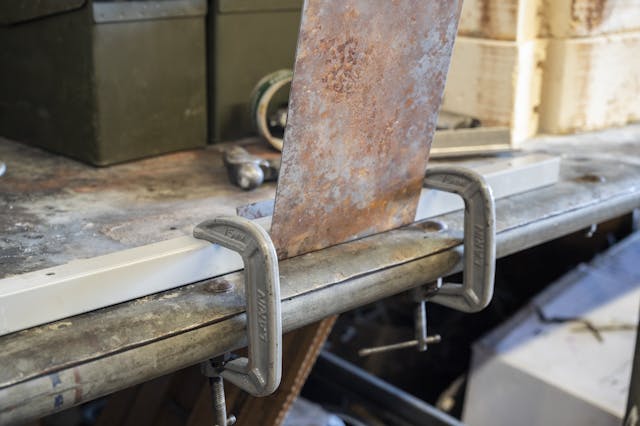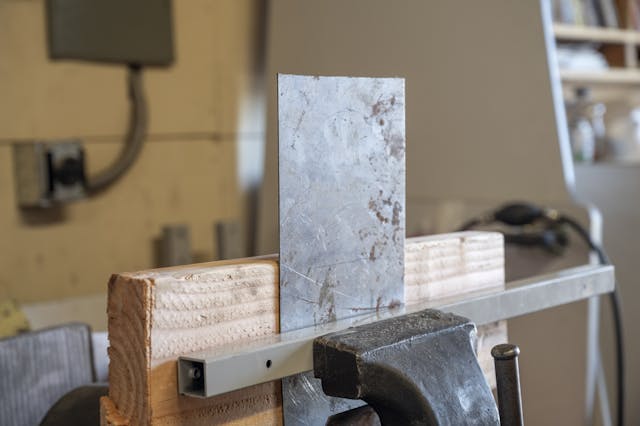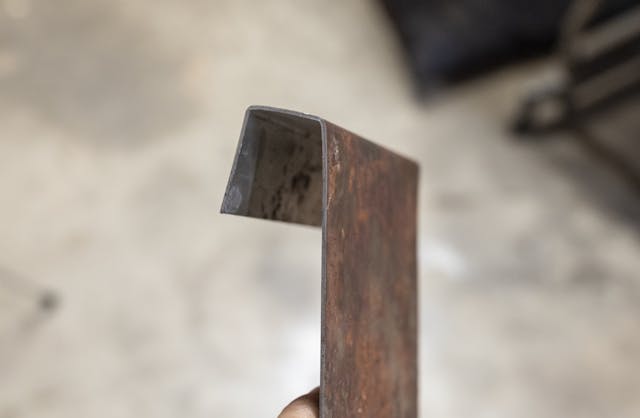Media | Articles
Wrenchin’ Wednesday: Sharp sheetmetal edges without a brake
When you’re starting out, metalwork seems like a tricky skill to get into without the right tools on hand. There’s a plethora of industrial-grade metal manipulators that stand tall like redwoods in a shop; but, as you can guess, we’re going to ignore all of them and work around them with a basic bench setup.
Bending hard edges into sheetmetal can be tricky, but a few extra minutes of setup can produce a little extra crispness in a bend and make your home-built project look like it came out of a pro’s hand. There are two basic setups, one clamped to a bench and the other set up in a vise, but the technique is essentially the same.
In metalworking, if you want to build a particular feature—like a crisp bend—you’ll need another hard-edged piece around which to form the desired shape. Scrap metal works great; angle-iron and square-tubing are both strong enough and tend to have sharper bends that can handle the working stress. Wood works too, but it can deform and soften the edge you’re trying to produce in the metal.
The bending forces can be fairly significant, so you’ll need to think how to best clamp the setup before working the metal. Clamping to a table or a vice ensures that the bend will happen along a consistent place without the material working loose and walking the bend around.
Preferably, you’ll want to use gloves when working with unfinished metal, but, otherwise, you can start the bend by hand from here. Without a brake to back the sheetmetal as it creates the bend, a little hammering on the back side can complete the bend quickly.
Marketplace
Buy and sell classics with confidence
Obviously, this could be worked further into a sharp 90-degree bend, but my editor is yelling at me to get this done and, like beauty rest, perfection takes time. In a future installment, we’ll build a DIY sheetmetal brake. For today, however, this impromptu clamping setup allows for quick bends with the total cost of $Free.99 in materials, given that everything came from off-cuts.
















